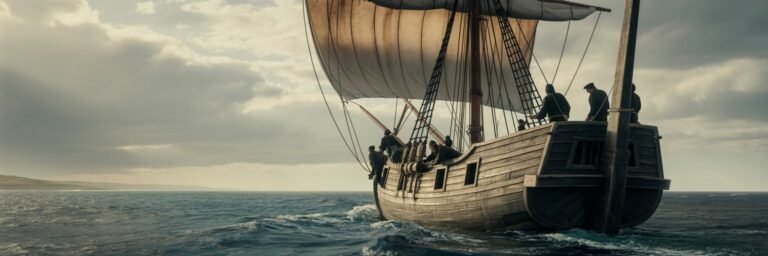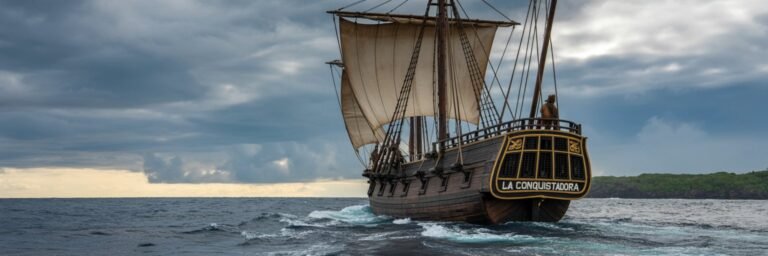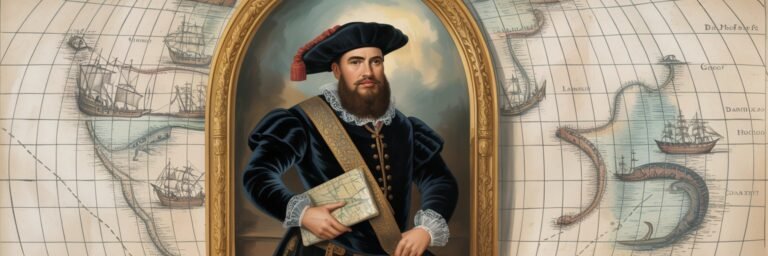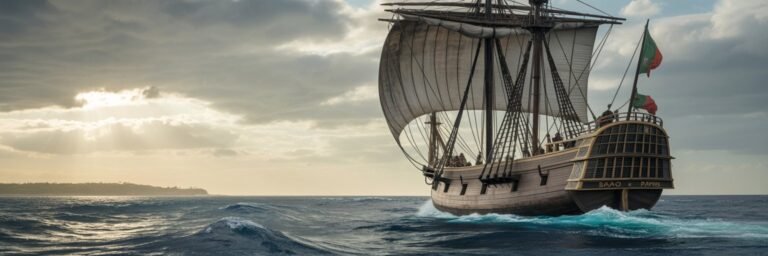INTRODUCTION
The Age of Exploration was a profoundly significant era in human history, a period that saw the boundaries of the known world stretch and snap, transforming the globe into a more interconnected sphere. The inquisitively intrepid sailors of the 15th through 17th centuries pushed the compass far beyond its known limits, exploring new lands, encountering diverse cultures, and forever altering the course of civilization. This article seeks to trace the timeline of crucial events in this incredible epoch, charting the course of the Age of Exploration and exposing its far-reaching significance.
HISTORICAL BACKGROUND
The origins of the Age of Exploration can be traced back to the Late Middle Ages. After the fall of Constantinople in 1453, Europe’s traditional overland trade routes to the East became perilous, prompting European powers like Portugal and Spain to seek safer, maritime routes to the Spice Islands and Asia. King John II of Portugal’s setting up of his dedicated explorer’s school in Sagres ignited the exploration spark.
In 1492, Columbus, an Italian navigator sponsored by the monarchs of Spain, Ferdinand and Isabella, aimed west in hopes of a new route, accidentally stumbling upon the Americas. This brought forth a rush of expeditions by various European powers, kicking off the Age of Exploration in full swing.
THEORIES AND INTERPRETATIONS
Traditional readings of the Age of Exploration focus on advancements in shipbuilding and navigation techniques, coupled with a thirst for wealth and religious zeal to convert new lands to Christianity. Critical Discourse Analysis highlights the era as one of domination and exploitation, centering on the brutality of colonialism and systemic oppression. The idea of “terra nullius,” justifying conquest in the name of uncultivated, unoccupied land, is frequently discussed.
The other interpretation threads the narrative of exchange and cultural diffusion. Historians like Jack D. Forbes argue that the period was as much about intermingling and learning as about conquest, marking it as an era triggering the first wave of globalization.
MYSTERIES AND CONTROVERSIES
One of the enduring mysteries in the Age of Exploration concerns Columbus’s first landfall in the New World— whether it was San Salvador, Samana Cay or Plana Cays— a fervently-debated topic among researchers.
Perhaps the most significant controversy of this era centers around the question of contact pre-dating Columbus. Scholars like Dr. Samuel Eliot Morison have persistently explored evidence hinting at Viking settlements in North America.
SYMBOLISM AND CULTURAL SIGNIFICANCE
The Age of Exploration embodies a range of symbols. For some, it symbolizes humanity’s unquenchable curiosity, symbolized by figures like Columbus bravely embarking into the unknown. For others, it stands for the brutal force of colonialism, as embodied by figures like Hernán Cortés or Francisco Pizarro.
From the cultural perspective, this era signified a great fusion, introducing Europe to goods and ideas from the Americas, Africa, and Asia, while carrying European influence to these shores. The era’s potent symbolism, where the setting sun no longer signified an end but the possibility of a new world, formed the foundation of modern cultural globalization.
MODERN INVESTIGATIONS
Modern investigations into the Age of Exploration have benefited considerably from technological advancements. Archaeologists have used satellite imaging to reveal lost settlements like the Viking colonies in Newfoundland. Marine archaeologists have uncovered numerous shipwrecks, shedding light on shipbuilding techniques, trade patterns, and crew’s living conditions.
In written documents, the linguistic analysis of expeditions’ records, along with genetic studies tracing the exchange of plants, animals, and diseases across continents, provide valuable insights into this period. These investigations continue to reshape our understanding of this era, reorienting our notions of its significance and complexity.
LEGACY AND CONCLUSION
The legacies of the Age of Exploration are inextricably woven into the fabric of our modern world. This era reshaped global economics, transport, and communication, laying the basis for global interdependence and the modern world system.
Culturally, it impacted languages, food, and arts, inspiring cross-cultural exchanges that continue to enrich our world. Most importantly, it left us with cautionary tales about the perils of unchecked greed, the need for cultural sensitivity, and the importance of compassionate exploration.
The Age of Exploration transformed the world, expanding horizons, driving globalization, and introducing an era of exchange and integration. Its historical complexities prompt us to continue investigating, challenging previously held beliefs, and adding depth to our understanding of the past. Ultimately, the era serves as a harbor for the world we navigate today, a complex mosaic of cultures and histories, forever marked by the audacious sailors who first dared to venture into the unknown.
This rich tapestry of history fascinates us, leading us to explore, investigate, and attempt to understand this momentous period––much as the explorers of old sought to comprehend the mysteries of the world around them.





